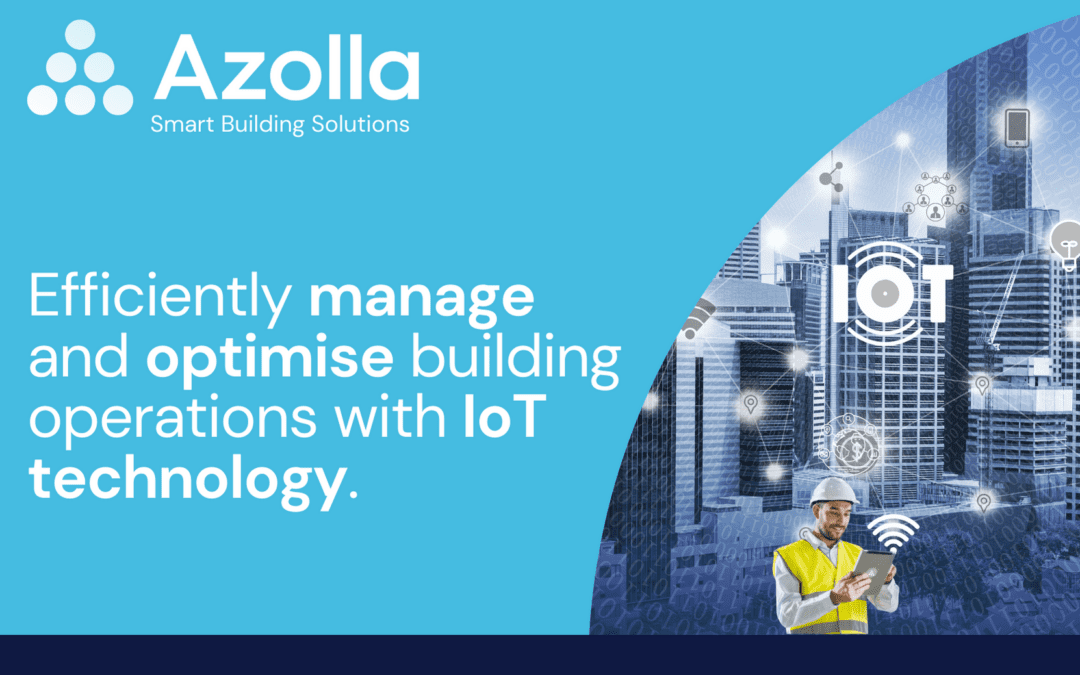In the dynamic realm of facilities management and operations, the integration of Internet of Things (IoT) sensors has emerged as a pivotal advancement, offering a myriad of benefits for professionals overseeing building functionalities. From energy efficiency and cost savings to enhanced safety and improved productivity, the deployment of IoT sensors is reshaping the way facilities are monitored and controlled. In this blog post, we delve into the diverse advantages that IoT sensors bring to facilities management and operations, providing a comprehensive overview of how these technologies can revolutionise traditional approaches. Whether it’s optimising energy consumption, ensuring occupant comfort, or facilitating remote monitoring, the incorporation of IoT sensors opens up a new realm of possibilities for creating intelligent, efficient, and sustainable spaces in the context of facilities management and operations.
Here are 13 potential benefits for operations or facilities managers incorpating IoT in Building Management:
- Energy Efficiency:
- Sensors can optimise lighting, heating, and cooling based on occupancy, leading to significant energy savings.
- Monitoring energy usage enables better resource management and identification of opportunities for efficiency improvements.
- Cost Savings:
- Energy-efficient operations and predictive maintenance can result in cost reductions over time.
- Early detection of issues, such as water leaks or equipment malfunctions, helps prevent costly repairs and downtime.
- Occupant Comfort:
- Temperature, humidity, and lighting sensors contribute to maintaining a comfortable and productive indoor environment for occupants.
- Adaptive systems respond to changes in occupancy, ensuring optimal conditions in real-time.
- Maintenance Optimisation:
- Predictive maintenance based on sensor data helps prevent equipment failures and extends the lifespan of assets.
- Continuous monitoring allows for timely identification of issues, reducing downtime and minimising disruptions.
- Improved Security:
- Door/window sensors, motion detectors, and surveillance cameras enhance building security.
- Access control systems with RFID sensors provide secure entry and exit monitoring.
- Enhanced Safety:
- Smoke, fire, and gas sensors contribute to early detection of potential hazards, improving overall safety.
- Water leak sensors help prevent damage to structures and assets.
- Environmental Monitoring:
- CO2, light, and other environmental sensors contribute to creating a healthier and more sustainable workspace.
- Monitoring environmental factors aligns with sustainability goals and regulatory compliance.
- Space Optimisation:
- Occupancy and motion sensors aid in understanding space utilisation, facilitating better space planning and resource allocation.
- Insights into space usage can inform decisions about renovations or expansions.
- Real-Time Data and Analytics:
- Continuous data collection provides real-time insights into building performance.
- Analytics based on sensor data enable data-driven decision-making and the identification of trends or anomalies.
- Remote Monitoring and Control:
- Managers can remotely monitor and control building systems through IoT platforms, enhancing operational efficiency.
- Remote access enables quicker responses to issues and reduces the need for physical presence on-site.
- Compliance and Reporting:
- Sensors can assist in monitoring and ensuring compliance with environmental regulations, safety standards, and industry guidelines.
- Automated reporting simplifies the documentation of adherence to various standards.
- Asset and Inventory Management:
- RFID sensors help in tracking assets and inventory, reducing the likelihood of loss or theft.
- Streamlined asset management contributes to better organisation and cost-effectiveness.
- Improved Productivity:
- Comfortable and well-maintained environments contribute to increased occupant satisfaction and productivity.
- Automated systems reduce manual tasks, allowing staff to focus on more strategic aspects of their roles.
By harnessing the power of IoT sensors, operations or facilities managers can transform their approach to building management, creating smarter, more efficient, and sustainable spaces.

